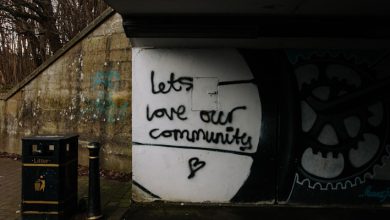Comparing Metaverse Platforms: Decentraland vs. The Sandbox

- A Deep Dive into Metaverse Platforms
- Exploring the Virtual Worlds of Decentraland and The Sandbox
- Comparing Features and Functionality
- User Experience: Navigating Decentraland and The Sandbox
- Economic Systems in Virtual Realms
- Community Engagement and Social Interactions
A Deep Dive into Metaverse Platforms
When it comes to exploring metaverse platforms, it’s essential to take a deep dive into the features and functionalities offered by each option. Decentraland and The Sandbox are two popular platforms that allow users to create, explore, and interact in virtual worlds.
Decentraland is a decentralized platform that runs on the Ethereum blockchain, giving users ownership of the digital assets they create. It offers a vast virtual world divided into parcels of land that users can buy, sell, and develop as they see fit. The platform uses its native token, MANA, to facilitate transactions and interactions within the virtual world.
On the other hand, The Sandbox is a gaming-focused platform that empowers users to create their games, assets, and experiences using the platform’s intuitive tools and resources. It leverages blockchain technology to ensure true ownership of digital assets and enable seamless transactions between users. The platform’s native token, SAND, is used for in-world transactions and governance.
Both platforms offer unique opportunities for users to express their creativity, engage with others, and even monetize their creations. Decentraland appeals to those interested in virtual real estate and digital asset ownership, while The Sandbox caters more to gamers and content creators looking to build immersive experiences.
Exploring the Virtual Worlds of Decentraland and The Sandbox
Exploring the virtual worlds of Decentraland and The Sandbox offers users a glimpse into the endless possibilities of the metaverse. Decentraland, known for its decentralized approach to virtual land ownership, allows users to create, buy, and sell digital assets within its virtual environment. On the other hand, The Sandbox focuses on user-generated content, enabling players to build, share, and monetize their gaming experiences.
Comparing Features and Functionality
When comparing the features and functionality of Decentraland and The Sandbox, it is important to consider the unique aspects of each platform. Decentraland offers users the ability to create and monetize their virtual spaces using blockchain technology. This provides a sense of ownership and control over the virtual world, allowing users to buy, sell, and trade digital assets within the platform.
On the other hand, The Sandbox focuses on user-generated content and creativity, allowing users to build their own games, experiences, and virtual lands. The platform uses a voxel-based editor that is intuitive and easy to use, making it accessible to users of all skill levels. Additionally, The Sandbox has partnerships with major brands and IPs, giving users the opportunity to create content based on popular franchises.
Decentraland and The Sandbox both offer social features that allow users to interact with each other in the virtual world. Decentraland has events, meetups, and conferences that bring the community together, while The Sandbox has a social hub where users can chat, hang out, and collaborate on projects. Both platforms also have in-game economies that allow users to buy, sell, and trade virtual assets using cryptocurrency.
Overall, Decentraland and The Sandbox are both innovative metaverse platforms that offer unique features and functionality to their users. Decentraland focuses on ownership and monetization, while The Sandbox emphasizes creativity and user-generated content. Depending on your preferences and goals, either platform could be a great choice for exploring the possibilities of the metaverse.
User Experience: Navigating Decentraland and The Sandbox
When it comes to user experience, navigating Decentraland and The Sandbox can offer quite different experiences for users. Decentraland focuses on a decentralized virtual world where users can buy, sell, and build on virtual land using the platform’s native cryptocurrency, MANA. On the other hand, The Sandbox offers a more gamified experience, allowing users to create, own, and monetize their gaming experiences using the platform’s utility token, SAND.
Decentraland provides users with a more open-ended and decentralized experience, where they can explore a vast virtual world and interact with other users in a variety of ways. The platform’s user interface is relatively intuitive, making it easy for users to navigate and engage with the virtual environment. However, the complexity of the platform’s economic system and the need to use MANA for transactions can be a barrier for some users.
On the other hand, The Sandbox offers a more structured and gamified experience, with a focus on user-generated content and gaming experiences. Users can create their own games, characters, and assets using the platform’s voxel-based editor, which is designed to be user-friendly and accessible. The platform also features a marketplace where users can buy and sell assets using SAND tokens, creating opportunities for monetization.
Overall, Decentraland and The Sandbox offer unique user experiences that cater to different preferences and interests. Decentraland’s decentralized virtual world provides a more open-ended and exploratory experience, while The Sandbox’s gamified approach offers more structure and opportunities for creation and monetization. Whether you prefer to explore a virtual world or create your own gaming experiences, both platforms have something to offer for users interested in the metaverse.
Economic Systems in Virtual Realms
In virtual realms like Decentraland and The Sandbox, economic systems play a crucial role in shaping the virtual economies within these metaverse platforms. These economic systems are designed to simulate real-world market dynamics, allowing users to buy, sell, and trade virtual assets using cryptocurrency.
One key aspect of these economic systems is the concept of digital scarcity, where virtual assets are limited in quantity, creating value and demand among users. This scarcity drives the virtual economy, as users compete to acquire rare and valuable assets within the metaverse.
Another important feature of these economic systems is the ability for users to create and monetize their own virtual assets. In both Decentraland and The Sandbox, users can design and sell virtual land, buildings, and other assets, earning cryptocurrency in return. This user-generated content adds depth and variety to the virtual worlds, attracting more users and driving economic activity within the platforms.
Overall, the economic systems in virtual realms like Decentraland and The Sandbox are designed to mimic real-world market dynamics while offering users the opportunity to create, buy, and sell virtual assets. These systems play a crucial role in shaping the virtual economies of these metaverse platforms, providing opportunities for users to engage in commerce, creativity, and entrepreneurship within the virtual world.
Community Engagement and Social Interactions
In terms of community engagement and social interactions, both Decentraland and The Sandbox offer unique experiences for users to connect and interact with one another.
Decentraland provides a decentralized virtual world where users can create, own, and monetize their content. This platform allows for social interactions through events, virtual gatherings, and virtual real estate ownership. Users can explore different districts, participate in games, and attend virtual concerts, fostering a sense of community within the platform.
On the other hand, The Sandbox focuses on user-generated content and creation tools, allowing users to build their virtual worlds from scratch. This platform encourages collaboration among users, enabling them to create and share experiences with others. Social interactions in The Sandbox revolve around user-created events, games, and activities, providing a dynamic environment for community engagement.
Both platforms offer opportunities for users to socialize, collaborate, and engage with one another in virtual settings. Decentraland focuses on virtual real estate ownership and events, while The Sandbox emphasizes user-generated content and creation tools. Overall, both platforms cater to users looking to connect with others in immersive virtual environments.



